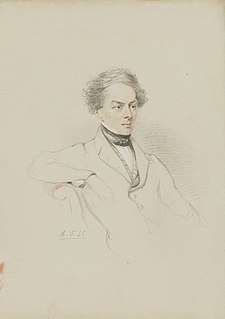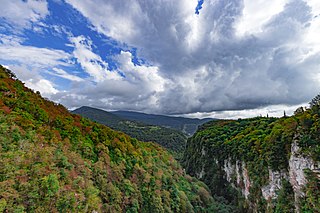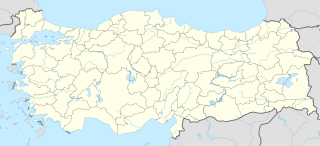India
- Patara, Jalandhar, a village in Punjab
- Patara, Kanpur, a village in Uttar Pradesh
Patara may refer to the following places and jurisdictions:
An acropolis was the settlement of an upper part of an ancient Greek city, especially a citadel, and frequently a hill with precipitous sides, mainly chosen for purposes of defense. Most commonly known is the Acropolis of Athens, yet every Greek city had an acropolis of their own. Acropolises were used as religious centers and places of worship, forts, and places in which the royal and high-status resided in. Acropolises became the nuclei of large cities of classical ancient times, and served as important centers of a community. They are mostly known now as prominent landmarks in modern cities with ancient pasts, such as modern-day Athens. Some well-known acropolises have become the centers of tourism in present-day, and, especially, the Acropolis of Athens has been a revolutionary center for the studies of ancient Greece since the Mycenaean period.
Arsinoe Ancient Greek: Ἀρσινόη, romanized: Arsinoë, pronounced Arsinoi in modern Greek, may refer to:

The Lycian Way is a marked long-distance trail in southwestern Turkey around part of the coast of ancient Lycia. It is over 500 km (310 mi) in length and stretches from Hisarönü (Ovacık), near Fethiye, to Geyikbayırı in Konyaaltı about 20 km (12 mi) from Antalya. It is waymarked with red and white stripes of the Grande Randonnee convention. It was conceived by Briton Kate Clow, who lives in Turkey. It takes its name from the ancient civilization, which once ruled the area.

Sir Charles Fellows was a British archaeologist and explorer, known for his numerous expeditions in what is present-day Turkey.

Patara, later renamed Arsinoe (Ἀρσινόη), was a flourishing maritime and commercial city on the south-west coast of Turkey near the modern small town of Gelemiş, in Antalya Province. It is the birthplace of St. Nicholas in 270 AD, who lived most of his life in the nearby town of Myra (Demre).

The Turkish Riviera, also known popularly as the Turquoise Coast, is an area of southwest Turkey encompassing the provinces of Antalya and Muğla, and to a lesser extent Aydın, southern İzmir and western Mersin. The combination of a favorable climate, warm sea, mountainous scenery, fine beaches along more than a 1,000 km (620 mi) of shoreline along the Aegean and Mediterranean waters, and abundant natural and archaeological points of interest makes this stretch of Turkey's coastline a popular national and international tourist destination.
Eudemus may refer to:
Patara was a small ancient city in ancient Cappadocia or Lesser Armenia,, later in Pontus. The city lay on the major trade road from Trapezus on the Black Sea to Satala, and thence to Lake Van.
Mnaseas of Patrae or of Patara, whether that in Lycia or perhaps the Patara in Cappadocia was a Greek historian of the late 3rd century BCE, who is reckoned to have been a pupil in Alexandria of Eratosthenes. His Periegesis or Periplus described Europe, Western Asia and North Africa, but whether in six or eight books cannot now be determined. His On Oracles appears to have consisted of a catalogue of oracular responses with commentary. Only fragments of his work survive, some found in fragmentary papyri at Oxyrhynchus, others embedded as scholia or as quotations in other works, often selected, apparently, because of the unusual interpretations they offer.

Patara or Badara is a village de facto in the Askeran Province of the self-proclaimed Republic of Artsakh, de jure in the Khojaly District of Azerbaijan. The village has an ethnic Armenian-majority population, and also had an Armenian majority in 1989.

Khoni is a district of Georgia, in the region of Imereti. Its main town is Khoni.
Bathonea is a long-lost ancient Greek city that was located on the European shore of the sea of Marmara, 20 km west from Istanbul in Turkey.

Trebenna (Τρεβέννα) or Trabenna (Τραβέννα) was a city in ancient Lycia, at the border with Pamphylia, and at times ascribed to that latter region. Its ruins are located east of the modern town Çağlarca in the Konyaaltı district of Antalya Province, Turkey. The site lies 22 kilometers to the west of Antalya.

Kitanaura was an ancient city in Lycia. Its ruins are located near Saraycık, a small village in the Kumluca district of Antalya Province, Turkey.
Corydala or Corydalla or Korydalla or Korydala was a city of ancient Lycia. Anciently, it belonged to the Rhodians, according to Hecataeus, quoted by Stephanus. But it was not in Rhodes, nor was it one of the Rhodian possessions in the Peraea, Caria. The Tabula Peutingeriana marks Corydala on the road from Phaselis to Patara, and makes the distance between these two places 29 Roman miles Pliny places Corydalla in the interior of Lycia, and Ptolemy mentions it with Sagalassus, Rhodia, Phellus, Myra, and other places, as about Mons Massicytus.
The Stadiasmus Patarensis, also known as the Stadiasmus Provinciae Lyciae and the Miliarium Lyciae, is an ancient Roman milestone from the city of Patara. The stadiasmus, shaped as a pillar, served as a monumental public itinerarium. It has a Greek inscription with a dedication to Claudius and an official announcement of roads being built by the governor, Quintus Veranius Nepos, in the province of Lycia et Pamphylia, giving place names and distances. It was discovered in 1993. It has been dated to the year 46.
Phoenicus or Phoinikous, also known as Phoenice or Phoinike (Φοινίκη), was a port of ancient Lycia, a little to the east of Patara; it was scarcely 2 miles (3.2 km) distant from the latter place, and surrounded on all sides by high cliffs. In the war against Antiochus III the Great, a Roman fleet took its station there with a view of taking Patara.
Seroiata was a town of ancient Lycia, between Patara and Phellus. The name is not attested in history, but is derived from epigraphic and other evidence.

Teke Peninsula, also known as Teke Region, is a peninsula located in southwestern Turkey between the gulfs of Antalya and Fethiye extending into the Mediterranean Sea. It is bordered to the Turkish Lakes Region in the north.

Eşen River is a river in south west Turkey. 120 kilometres (75 mi) - river flows mostly in Muğla Province. It flows in the middle of Seydikemer ilçe (district) of Muğla Province. The river although quite short is known for its touristic importance.